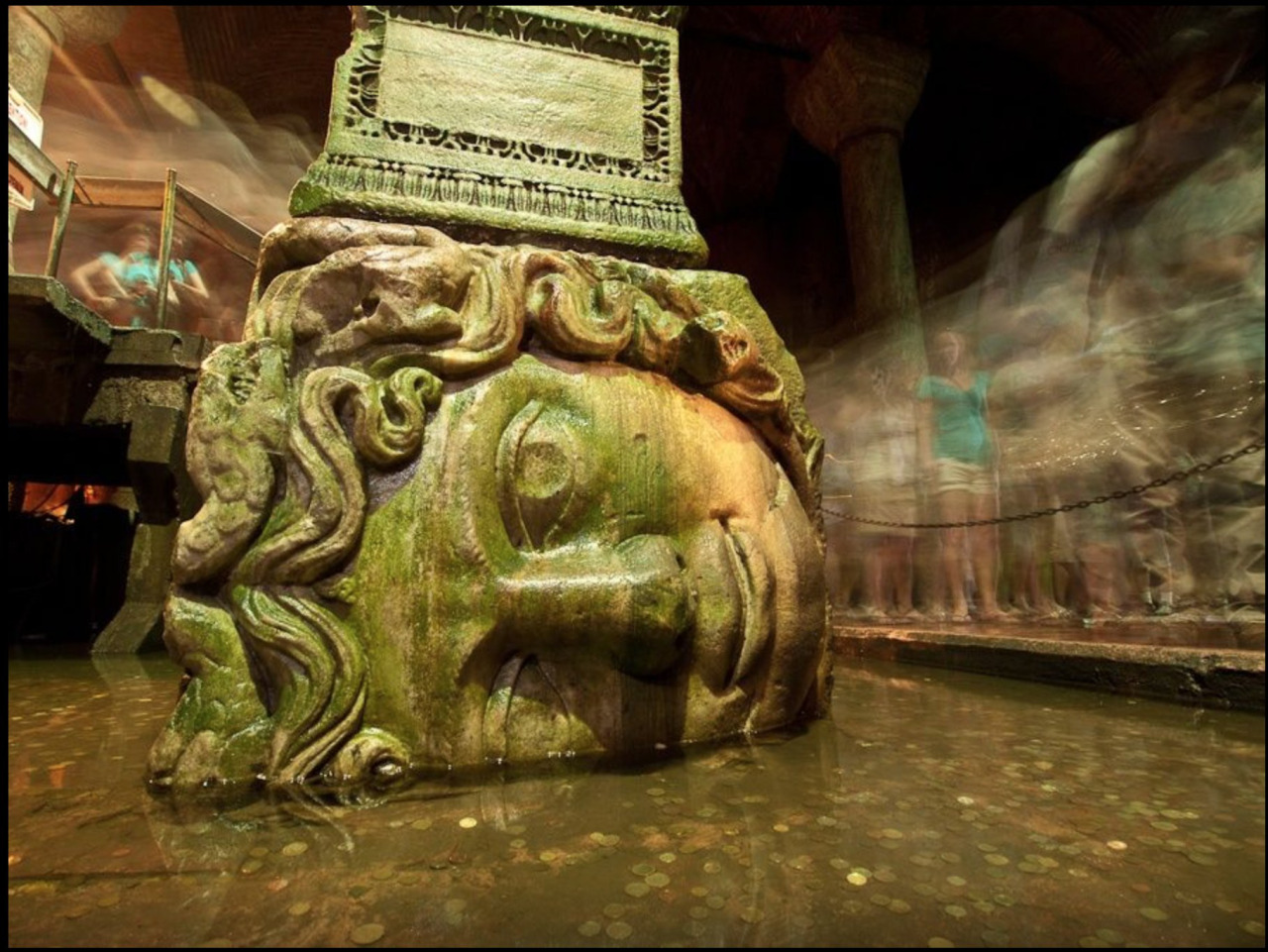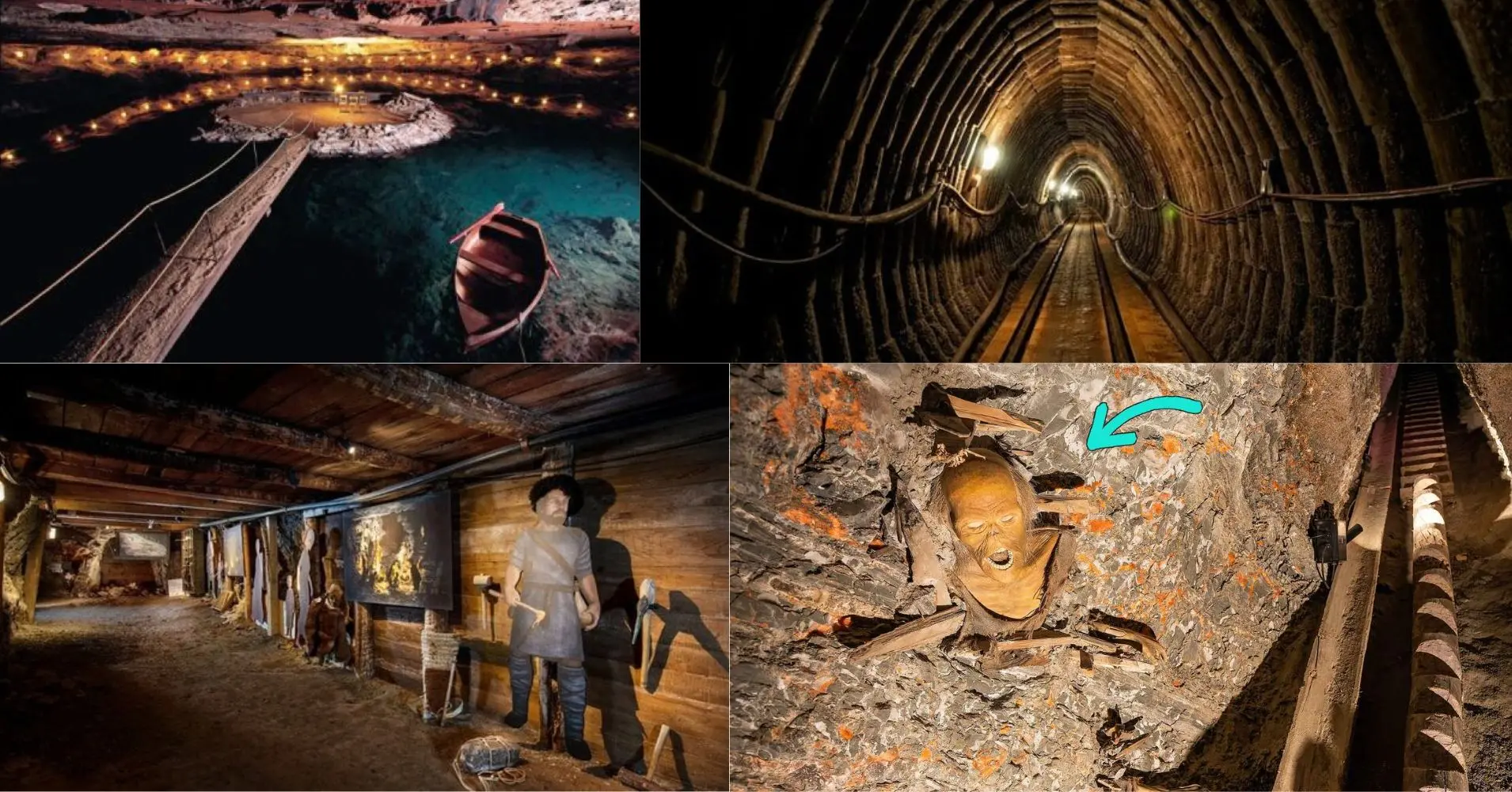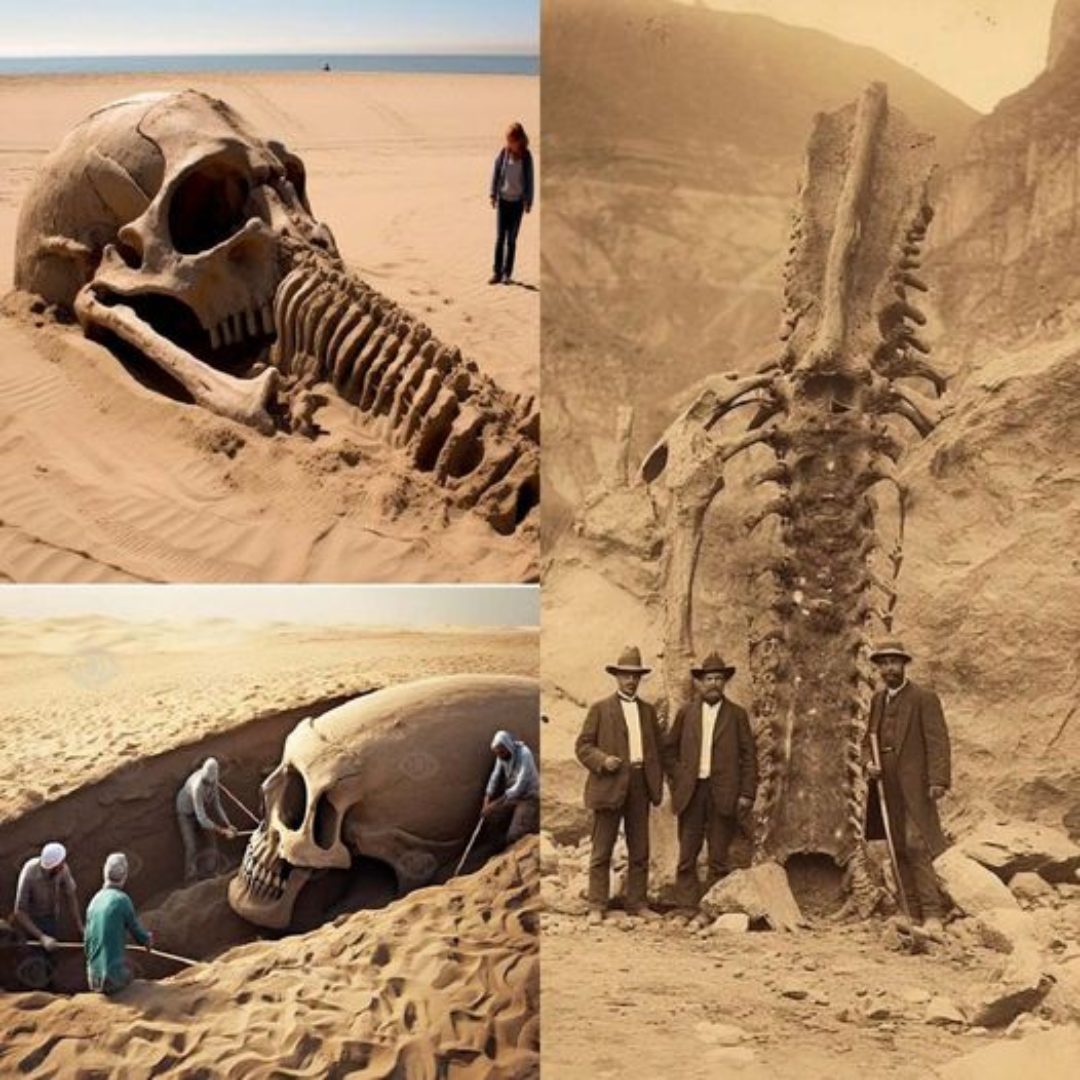
An intriguing feature of Basilica Cistern architecture is the presence of Medusa within the structure. Medusa was a Gorgon in Greek mythology, a winged woman who had a head full of living venomous snakes instead of hair and could turn people to stone with her gaze. Her figurines were installed in important structures of ancient times to ensure protection.
Two columns in the northwest corner of the Basilica Cistern stand on blocks that are carved with Medusa’s head. The origins of the two heads are unknown, but they are believed to have been brought from a Late Roman building. Their use in their previous location is not known either.

One of the heads has been positioned sideways, which would negate the power of Medusa’s gaze as per tradition. Another head, however, has been placed in an inverted position, which is not explained in tradition or the cistern’s construction. While the head placed sideways was positioned in such a manner to accommodate its size as per the column, the same could not be said about the inverted head. It is believed that the inverted head was of the right size for the column, but was not placed right side up to lessen the Gorgon’s powerful gaze.
- Medusa was a Gorgon, a creature with snakes for hair and the ability to turn people to stone.
- She was one of three Gorgon sisters, the others being Stheno and Euryale.
- Medusa was once a beautiful woman but was cursed by the goddess Athena after she was raped in her temple by Poseidon.
- The hero Perseus eventually defeated Medusa by using a mirror to avoid her gaze and cutting off her head.
- Medusa’s head had the power to turn people to stone, and it was eventually used by Perseus as a weapon against his enemies.
- In ancient times, Medusa’s image was often used as a protective symbol, intended to ward off evil spirits and protect sacred spaces.





